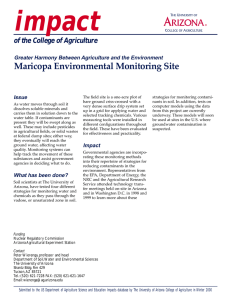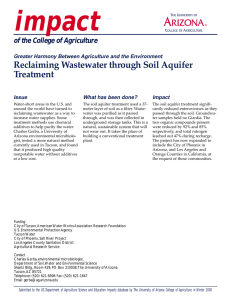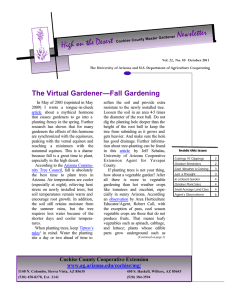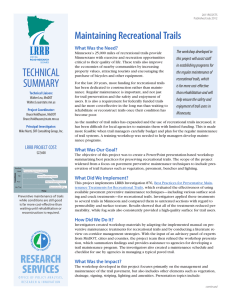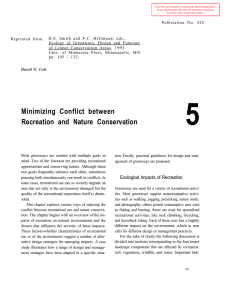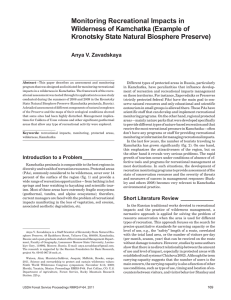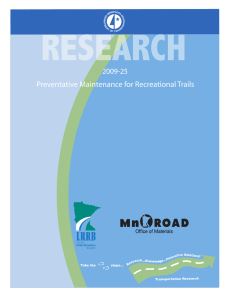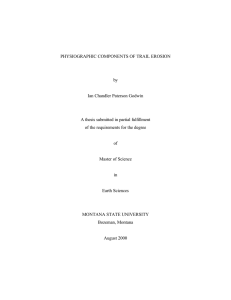Responsible Recreation: Balancing Human Activity and Nature
advertisement
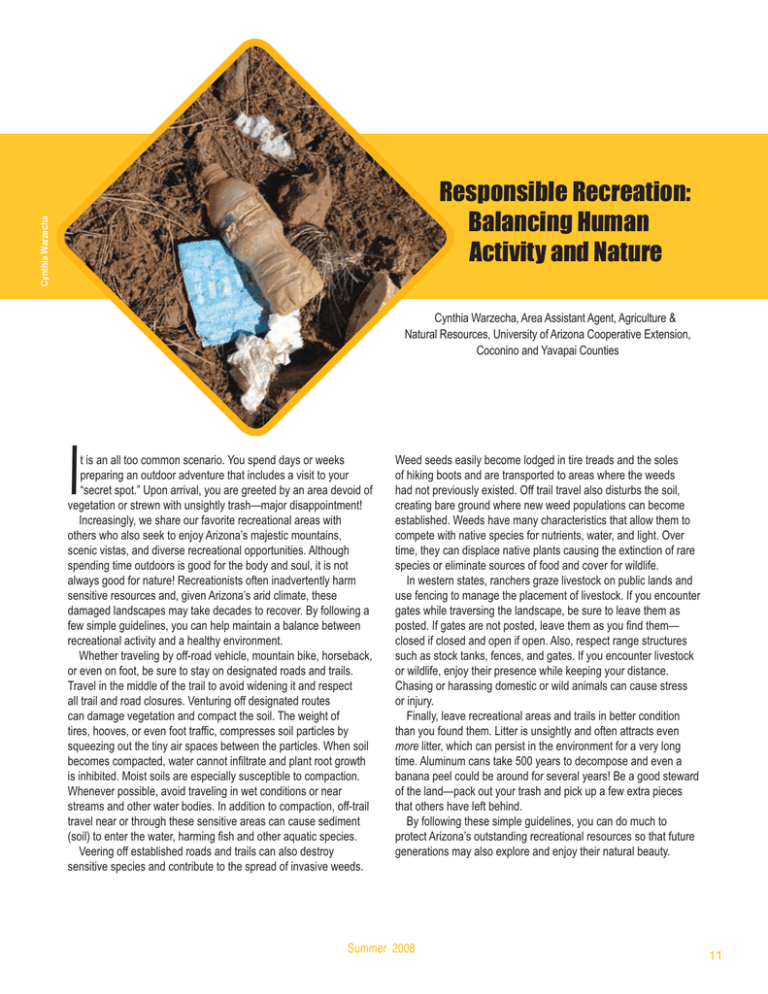
Cynthia Warzecha Responsible Recreation: Balancing Human Activity and Nature Cynthia Warzecha, Area Assistant Agent, Agriculture & Natural Resources, University of Arizona Cooperative Extension, Coconino and Yavapai Counties I t is an all too common scenario. You spend days or weeks preparing an outdoor adventure that includes a visit to your “secret spot.” Upon arrival, you are greeted by an area devoid of vegetation or strewn with unsightly trash—major disappointment! Increasingly, we share our favorite recreational areas with others who also seek to enjoy Arizona’s majestic mountains, scenic vistas, and diverse recreational opportunities. Although spending time outdoors is good for the body and soul, it is not always good for nature! Recreationists often inadvertently harm sensitive resources and, given Arizona’s arid climate, these damaged landscapes may take decades to recover. By following a few simple guidelines, you can help maintain a balance between recreational activity and a healthy environment. Whether traveling by off-road vehicle, mountain bike, horseback, or even on foot, be sure to stay on designated roads and trails. Travel in the middle of the trail to avoid widening it and respect all trail and road closures. Venturing off designated routes can damage vegetation and compact the soil. The weight of tires, hooves, or even foot traffic, compresses soil particles by squeezing out the tiny air spaces between the particles. When soil becomes compacted, water cannot infiltrate and plant root growth is inhibited. Moist soils are especially susceptible to compaction. Whenever possible, avoid traveling in wet conditions or near streams and other water bodies. In addition to compaction, off-trail travel near or through these sensitive areas can cause sediment (soil) to enter the water, harming fish and other aquatic species. Veering off established roads and trails can also destroy sensitive species and contribute to the spread of invasive weeds. Weed seeds easily become lodged in tire treads and the soles of hiking boots and are transported to areas where the weeds had not previously existed. Off trail travel also disturbs the soil, creating bare ground where new weed populations can become established. Weeds have many characteristics that allow them to compete with native species for nutrients, water, and light. Over time, they can displace native plants causing the extinction of rare species or eliminate sources of food and cover for wildlife. In western states, ranchers graze livestock on public lands and use fencing to manage the placement of livestock. If you encounter gates while traversing the landscape, be sure to leave them as posted. If gates are not posted, leave them as you find them— closed if closed and open if open. Also, respect range structures such as stock tanks, fences, and gates. If you encounter livestock or wildlife, enjoy their presence while keeping your distance. Chasing or harassing domestic or wild animals can cause stress or injury. Finally, leave recreational areas and trails in better condition than you found them. Litter is unsightly and often attracts even more litter, which can persist in the environment for a very long time. Aluminum cans take 500 years to decompose and even a banana peel could be around for several years! Be a good steward of the land—pack out your trash and pick up a few extra pieces that others have left behind. By following these simple guidelines, you can do much to protect Arizona’s outstanding recreational resources so that future generations may also explore and enjoy their natural beauty. Summer 2008 11

